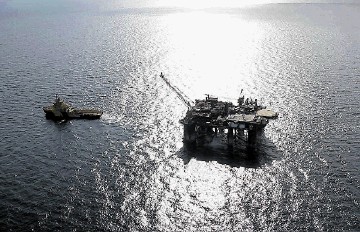
North Sea oil and gas company Ithaca Energy said yesterday it had completed a successful final development well test on the Stella field.
The five wells drilled achieved a combined maximum flow test rate of more than 53,000 barrels of oil equivalent (boe) per day.
Aberdeen and Calgary-based Ithaca said this “significantly de-risks” a project – the Greater Stella Area (GSA) – which is expected to produce about 30,000boe per day, including 16,000 for its own 54.66% stake.
GSA, with estimated net proven and probable reserves totalling more than 30million boe is in the heart of the Central Graben area of the central UK North Sea, 147 miles south-east of Peterhead.
Its licences cover the Stella and Harrier fields, which are in the process of being developed, as well as the Hurricane discovery and Twister prospect.
Operator Ithaca shares ownership with Dyas (25.34%) and energy service firm Petrofac (20%).
Key to start-up is completion of the FPF-1 floating production facility modifications being carried out by Petrofac in Poland.
Plans for the joint development of the fields were approved by the UK Department of Energy and Climate Change in April 2012. They centre on the drilling of subsea wells tied back to FPF-1.
Announcing a flow rate of more than 8,000boe per day from the fifth and final well test, with a high oil content, Ithaca chief executive Les Thomas said: “The results of the Ekofisk well further de-risk forecast cashflows from the Stella field.
“We are also encouraged that there is further upside potential for reserves development in the Ekofisk formation.”
The Ensco 100 heavy-duty jackup drilling rig will now be demobilised from the field, marking the end of the Stella development drilling campaign.
GSA production start-up is expected in the second quarter of 2016.
Recommended for you
